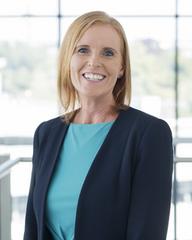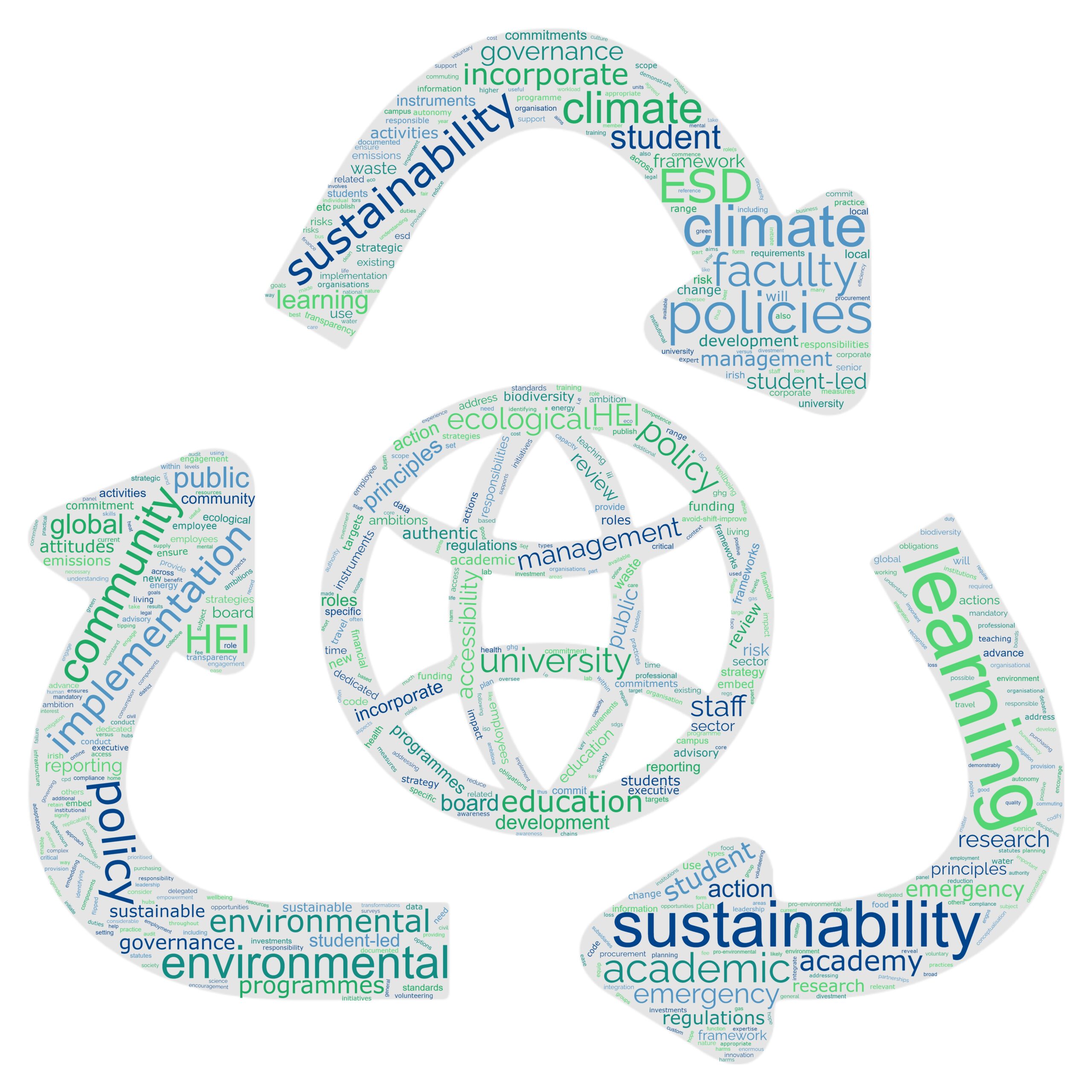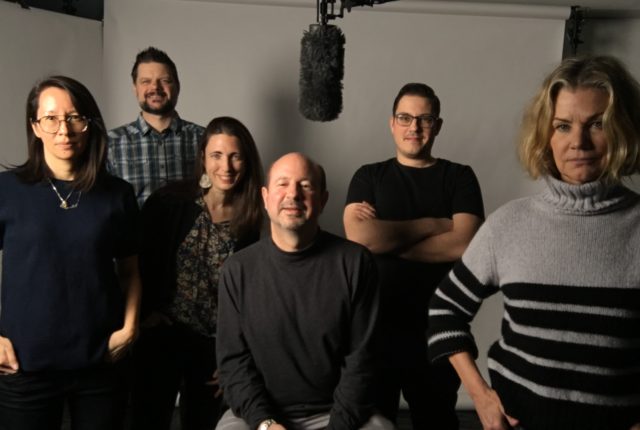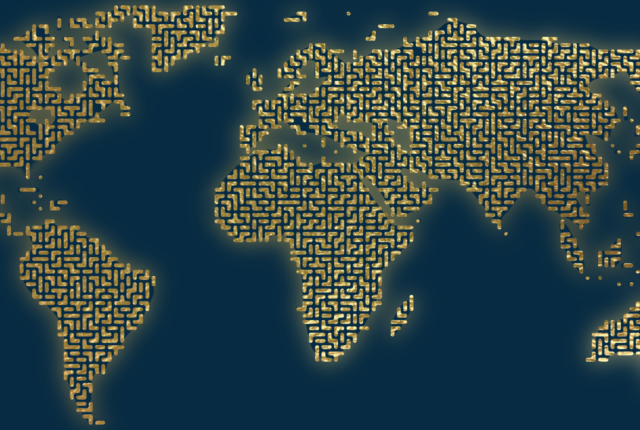By Mary Gallagher-Cooke
The existential nature of the climate and ecological emergency can stifle a sense of agency, creativity, and even hope, and it’s often evident in everyday conversations about climate change. But hope lies in meaningful actions, as I am regularly reminded.
I work at University College Dublin (UCD), an Irish university, and I am interested in how much higher education has embodied environmental sustainability and sustainable development into its corporate and academic governance. I researched several aspects of this during my MSc Sustainable Development to build up my public service toolset. Universities have significant budgets (often hundreds of millions per annum) and the opportunity to use their teaching and research to inform how they run themselves. How we use autonomy and governance matters.
I conducted a case study project on my university with a bias towards constructive action, a theme that was woven throughout my MSc Sustainable Development and SDG Academy resources. My main theoretical framework drew on Raworth’s Doughnut Economics and McCowan’s framework for universities’ impacts on climate change. The review comprised all current university strategies (n=10) and governance and policy instruments (n=190). Following a thorough analysis, I devised a bespoke and detailed framework of considerations for UCD based on its high level of ambition and current governance structure. Importantly, this framework used many of the university’s own good practices for students and employees as inspiration, all moving towards a generous university.

Kate Raworth’s corporate responses in Doughnut Economics: https://www.penguin.co.uk/books/429710/doughnut-economics-by-kate-raworth/9781473517813
I’m happy to share below ten key takeaways based on my research and a call to action to promote these:
- Consider your strengths: identify contributions to environmental sustainability.
Whatever actions, initiatives, customs, and practices are taken to protect or advance environmental sustainability, check if they have been codified with good governance.
Integrating environmental sustainability into existing governance demonstrates that it is an important part of the organisation’s enduring culture and values – and protects these activities from turnover of roles and strategies. Integrating it at the highest levels (e.g., board level) ensures it will be reported on and often advanced.
♻ Use ‘top-down’ policies and regulations that help ‘bottom-up’ activities, making the most of the bureaucracy and creativity of a university.
- Consider how you currently demonstrate how you value your students.
There will be many ways in each university or Higher Education Institution (HEI). This could be collective, e.g., in student welfare policies and codes, academic quality that goes beyond what is ‘required’ to achieve a particular bar. It could also include programmes for individuals – elite athletes and scholars – to demonstrate types of excellence or qualities that reflect the university’s values. If these advance sustainability, they can be codified. If they don’t, there may be an equivalent for Education for Sustainable Development (ESD).
♻ Use current models that go one step further for students to weave environmental sustainability into policies and programmes in ways that empower their lives and learning.
- Identify where you go ‘above and beyond’ for your employees.
Employees are decision-makers in the organisation, neighbourhoods, boards, international networks, and more. Using the organisation’s own good practices to rewarding and recognising employees, it may be possible to identify ways in which environmental sustainability activities can be advanced, from upskilling to promotions, sabbatical flexibility, volunteering, and more.
♻ Support and empower employees in authentic ways to help shape ambitious sustainability in their employment and their networks.
- Ensure your board is engaged and equipped for an emergency.
Advanced board-level expertise, codes of practice and frameworks, risk and policy management, dedicated strategies, and appropriate oversight can support an organisation’s transformation to meet the challenges of the climate and ecological emergency.
Following the science requires urgent action and wide-ranging transformations to model a university for this century’s societal and environmental challenges. Policy hierarchy matters for impact. Policy and governance lend themselves to aspects of environmental stewardship.
♻ Implement a compelling vision for the future, engaging governors and funders, and tell a story through publications and engagement.
- Model management policies: empowered with authority and urgency to address its responsibilities and challenges in this emergency.
Policy instruments can model a sustainable future through student services, environmental and campus management, employee development, and commercial investments. The use of management policies for environmental sustainability confirms their sustainability values and is attractive to the best minds of this century. Universities have the rare luxuries of scale and in-house expertise to develop and model these policies.
♻ Bake equity and inclusion into environmental sustainability governance so that decision-making reflects the Sustainable Development Goals (SDGs), addressing evidence-based approaches, priorities, spillovers, and ethics.
- At the halfway point of the SDGs, articulate what you want for your graduates, your alumni, and your communities.
The privilege of educating higher and professional degrees calls for purposeful deliberation and engagement. Universities help shape both future and current decision-making through curricula and learning experiences. The regulations and policies that shape that learning need to consider the why, what, and how of a student’s experience.
What if … we educated our first-year students about COVID-19, but not our practicing medical professionals?
♻ Use this critical opportunity to reach the current workforce with ESD. Use insights from other emergencies to inform approaches to teaching professional learners in a climate and ecological emergency.
- Bridge gaps to achieve the university’s ESD goals
Beyond education, what is researched, how that research is scoped and conducted, with whom a university forms partnerships (from local to international), and many other considerations shape a university’s bridge to being a beacon for sustainable development and environmental sustainability.
Embracing the breadth, complexity, and individuality of each HEI can celebrate each university’s distinct vision and mission.
♻ Review policies and frameworks to ensure they support partnerships and research with diverse communities.
- Incorporate approaches to governance and institutional policy that use the subject matter expertise in your organisation.
The opportunity to inform strategies, targets, policies, inclusive engagement, and creative methodologies is often at a university’s fingertips by engaging with its own community of experts. Partnering with students, local communities, and networks for these decisions allows a wealth of lived experiences and skills to inform deep and meaningful sustainability.
♻ Define roles and workload models for experts to be involved in policies and decision-making and reduce risks of reliance on tenacity/courage/goodwill/continued membership of individuals.
- Consider what you assess when you conduct audits and reviews
Insights and solutions lie in the details. Asking the right questions at the proposal and reviewing stages of various processes can help shape the organisation into one that models sustainability. To do this consistently, it needs policies and governance for principles and priorities, roles and responsibilities for boards, academic governance, management, students, and employees.
♻ Incorporate thematic reviews of policy and governance documents for environmental sustainability to benefit from comprehensive insights and reduce the potential for oversights.
- Reflect on your mission: what do you want to have contributed in this critical period of action?
Few institutions other than universities can serve their communities through intergenerational solidarity, global partnerships, and creative innovations for environmental stewardship and sustainable development. Harnessing the potential within the university and its networks to achieve transformative change represents hope in action. There is no time to lose, as increasing climate change impacts will challenge every aspect of society in the coming period.
♻ Support ambitious targets, commitments and strategies with transparent resourcing, collaborative implementation, and assessment tools to ensure impact and accountability.
Closing Comments
Through the use of my own existing knowledge base and passions, I could dig deep and find implementable ideas. I have widely shared much of what I learned through my research, and I was encouraged by my employer to do so – open collaboration and partnerships may be the closest thing we have to a “silver bullet.” These are in the working paper published by the UCD Geary Institute for Public Policy.
The climate and ecological emergency and the remainder of the SDGs’ timeline calls on us all to dig deep, reflect on the opportunities and privileges we have to contribute to solutions, and use partnerships to achieve them with equity, urgency, and hope in action.

Mary Gallagher-Cooke
Mary is the Operations Director of NexSys, an All-Island Science Foundation Ireland research partnership programme, hosted by the UCD Energy Institute in partnership with eight other leading research institutions. It involves academics working in partnership with industry to tackle the challenges of energy decarbonisation, developing evidence-based pathways for a net zero energy system. Mary has worked in private and public sectors, including over 15 years working in University College Dublin, Ireland in management, strategic development and governance positions.
Mary volunteers on sustainability and youth empowerment related issues, across governance, campaigns and projects.




